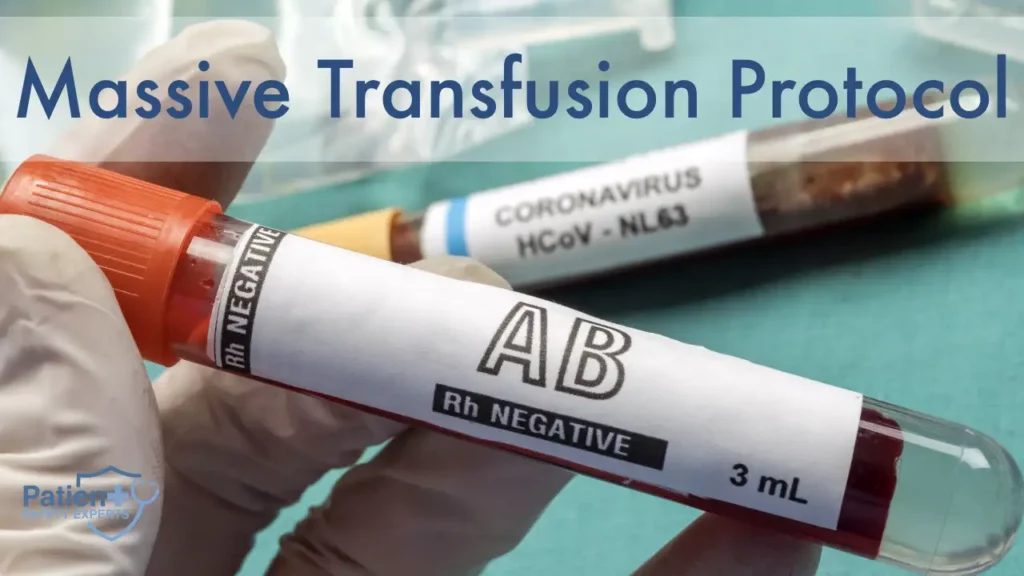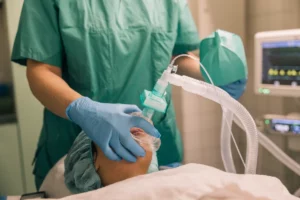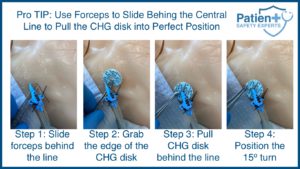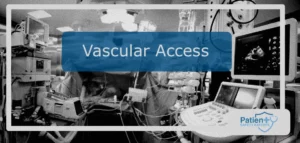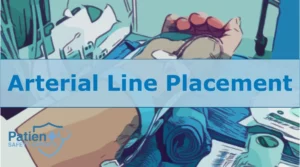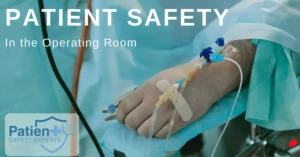Estimated reading time: 4 minutes
The exsanguinating patient, it’s a problem we don’t want to experience and can be found all over healthcare. It can be the ED trauma patient, the OB with a placenta accrete, an open aortic aneurysm repair or even your GI bleed patient in the ICU. Most of these situations are best handled with massive transfusion protocols (MTP) but a massive transfusion protocol alone won’t lead to a great outcome.
From a patient safety perspective, there is a great opportunity to improve patient safety through the development and implementation of massive transfusion protocols at your institution.
A well-executed massive transfusion protocol (MTP) consists of 3 parts:
IV Access + Massive Transfusion Protocol + Mechanical Transfusion Device
Like most high acuity problems in healthcare, the details are critical. Here are the items you have to get right or you will be left in a very challenging situation.
Part 1: Adequate IV Access
Not all IV access is equal. For the bleeding patient, you need large-bore IV access. In my experience as an anesthesiologist. that means 16g IV and above. Some people like to call an 18g IV large bore but in a true massive transfusion situation, the flow rates from an 18g IV are just not enough.
Peripheral IV Flow Rates:
The actual gravity flow rates differ based on exact size, length, and brand. Using values from a table provided by Smiths Medical you can see that:
- 18g IV flow rates around …. 85 – 110 ml / min
- 16g IV, flow rates around …. 205 – 220 ml / min
- 14g IV, flow rates around …. 330-350 ml / min
Central Venous Catheters (CVC)
You need the right CVC for the situation and your basic triple lumen CVC is not enough.
The best central venous catheters for massive transfusion protocols are going to be your Introducer Catheters or Rapid Infusion Catheters (RIC)
If you want to learn how to place ultrasound-guided subclavian central venous catheters look at our post or even better sign up for our free course below:
Key Point: Once you place your large-bore IV access, DO NOT place needless connector caps on the catheters. Attached your IVs directly to the catheter without anything in between.
There is a great article in Anesthesiology News about this called: Goodbye, Large-Bore IV Access which you can find here.
READ that article! It’s very well done and goes into great detail on why you should not use needless connectors on your IVs for resuscitation or massive transfusion.
Part 2: Massive Transfusion Protocols (MTP)
Once you have established large-bore IV access, you can start administering blood products. The reason I have MTP second is that without adequate IV access, you can have all the blood products you need and not be able to administer them fast enough.
Therefore it is critical to establish large-bore IV access.
In a massive transfusion setting, I like to say: If it doesn’t carry oxygen or make a clot, don’t give it. Acute hemodilution of platelets and clotting factors is a major problem associated with massive transfusion.
Resuscitation and massive transfusion are rapidly changing areas in healthcare. There are thousands of papers in the literature reviewing the specific details of massive transfusions and resuscitation. If you are developing a massive transfusion protocol, you will need to do some homework to make sure the details work for your institution.
Here is a generic Massive Transfusion Protocol (MTP) PDF that you can download to get started.
DISCLAIMER: This is not intended to establish a protocol for all patients with a particular condition, may not be replicable at your institution, and is not intended to replace a clinician’s clinical judgment. I am providing this as a template to start the process at your institution so you can develop it to meet your specific needs.
Your medical specialty society will generally have a more detailed massive transfusion protocol (MTP) to fit your unique situation. Here are some links you might find helpful:
Surprisingly I could not find any official protocols from emergency medicine societies.
Part 3: Mechanical Transfusion Devices
With good IV access, gravity-flow rates are nice but they just don’t get the job done. If cardiac output is 3-5L/min and the blood loss is rapidly approaching that rate, you need a device that can provide 1000ml/min of volume replacement.
This scenario is where the Belmont shines
For those of you who have not used a Belmont, it is a mechanical rapid infusor capable of transfusing up to 1000ml/min.
Another Rapid Infusion Device commonly seen in EDs and Trauma centers is the Level 1 Rapid Infuser.
The Level 1 Rapid Infuser is another great way to give large volumes of blood products. If I had a choice, my preference is the Belmont.
Summary
In summary, a well-executed massive transfusion protocol consists of a 3 part formula that is developed for your specific institution. Make sure your teams execute on the details for the best results.
- Do your frontline staff have adequate training and know how to insert large bore IV access? Learn more about large-bore IV access techniques.
- Have you developed a massive transfusion protocol for your organization? Who are the key stakeholders and when can you get them involved?
- Have you provided your team with adequate equipment in the form of mechanical transfusion devices?

